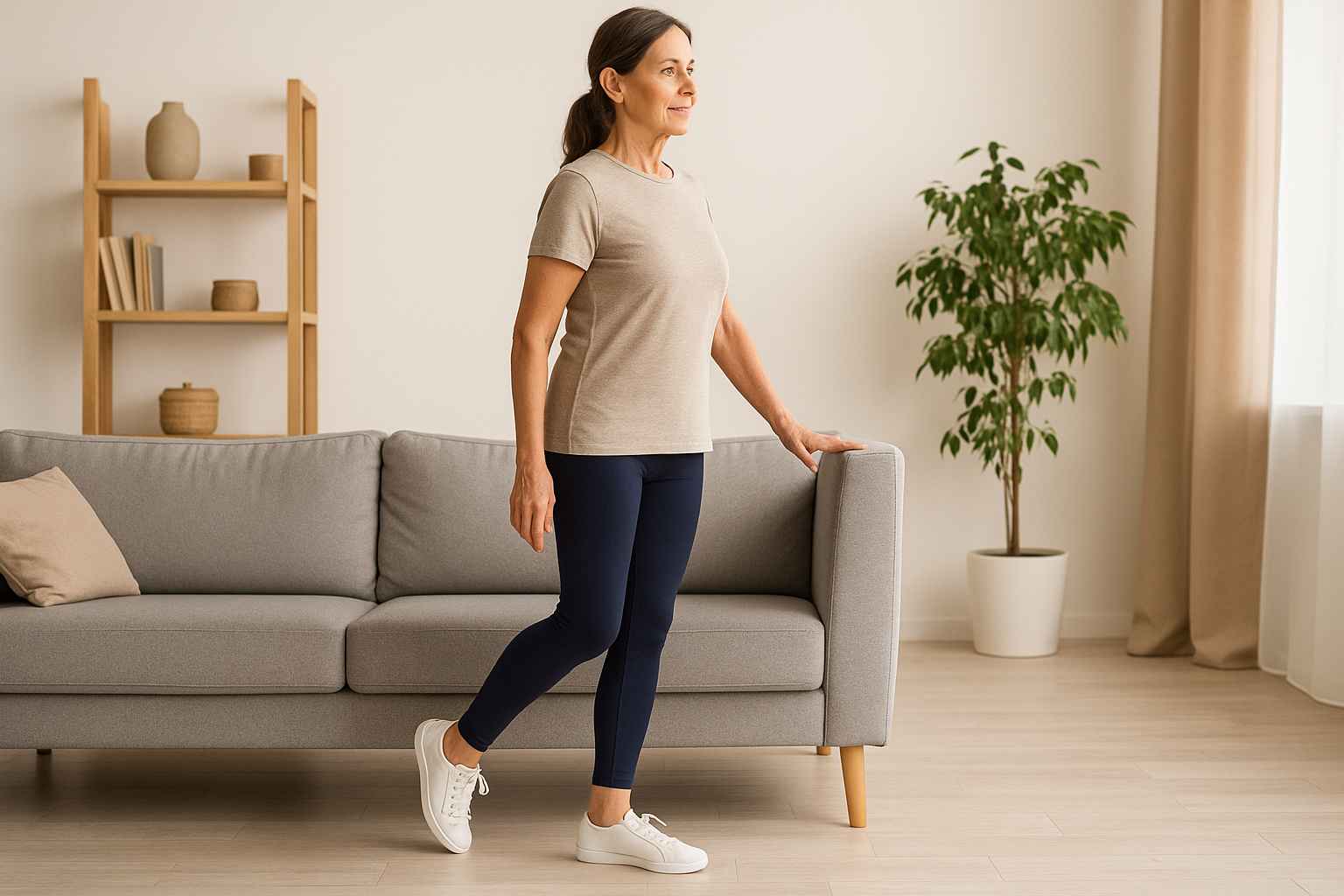One of the world’s modern-day mysteries is how to get rid of hiccups. Although hiccups are pretty funny the first few minutes we have them, they can get pretty tiring and even annoying after a while. Because there’s no cure for hiccups, people have been trying various remedies, from swallowing a spoonful of sugar to chugging down water to holding your breath. However, what many don’t realize is that acupuncture and acupressure can also help with hiccups. As we will soon go over, there are various acupressure points for hiccups that you can use the next time you have an episode.
Why Do We Get Hiccups?
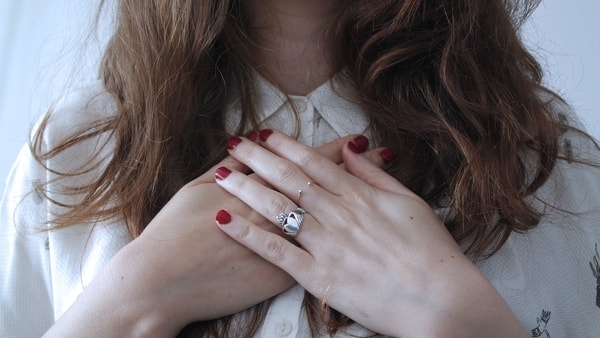
Hiccups are involuntary spasms of the diaphragm, a muscle under your lungs that aids in breathing. During a hiccup, the diaphragm suddenly contracts, causing you to take in a gulp of air. At the same time, your vocal folds close in on each other, which makes the “hic!” sound. Sometimes this lasts for a second, but for others, it can turn into chronic hiccups. They tend to stick around because of irritation to the nerves that stimulate the diaphragm. We can get hiccups due to various reasons, such as eating too quickly, feeling anxious, drinking carbonated beverages, etc. But unfortunately, we don’t know why they occur. Researchers have theorized that hiccups may have been a way for the fetus to strengthen the muscles needed for breathing, while others believe the reflex is triggered by air in the stomach.
Can Acupuncture Cure Hiccups?

Acupuncture is the practice of using needles to pinpoint “acupuncture points” (also known as “acupressure points” or “acupoints”) for the purpose of healing ailments in the body. Abnormalities are a result of energetic imbalances in the many energy channels that flow throughout the body. Needles stimulate different acupoints in each of these channels to remove these imbalances or blockages. Acupuncture has recently grown in popularity as an alternative holistic treatment in Western society. However, there is more and more growing evidence that acupuncture is a legitimate form of treatment for a variety of issues, including hiccups. In traditional Chinese medicine (TCM) theory, it is believed that hiccups are due to the reversed flow of qi in the chest and diaphragm. Treatment of hiccups involves bringing that flow of qi back to its normal state using acupressure points for hiccups. In one study from 2010, it was found that treating acupressure points for hiccups significantly improved persistent hiccups in cancer patients. Although it is helpful, it doesn’t mean that acupuncture cures persistent hiccups. The TCM system from which acupuncture is derived believes that persistent hiccups could be a symptom of another underlying problem, so it is best to consult a professional for advice.
How Do You Get Rid Of Hiccups Using Acupressure?
On the other hand, acupressure is like the DIY version of acupuncture. Instead of needles, you are only using your hands or a device. To perform acupressure for hiccups, all you need to do is massage and apply direct pressure at specific acupoints that we’ll discuss in detail below. You can apply this technique whenever and wherever you want. However, make sure to avoid injuries, sores, bruises, lacerations, or any other areas that could potentially worsen with acupressure treatment.
Acupressure Points For Hiccups
-
Acupoint: TE-17 (Other Names: Triple Energizer-17/Yi Feng/Wind Screen)
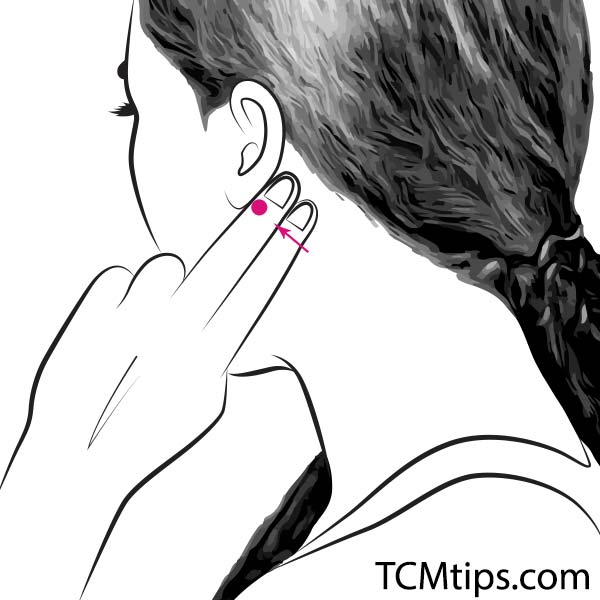
TE-17, also known as “yifeng” or wind screen”, is located in the depression behind your earlobe. This acupoint indirectly treats hiccups by regulating the qi in the Gallbladder Meridian and diaphragm. Interestingly, TE-17 also happens to be in the area where vagus nerve distribution is abundant. The vagus nerve is often responsible for irritating the diaphragm and causing hiccups. One study in 2003 found that solely treating this acupoint helped 92.6% of hiccup cases. TE-17 is also known for treating facial paralysis, toothaches, deafness and is one of the acupressure points for tinnitus.
-
Acupoint: Ren-15 (Other Names: The Conception Vessel-15/Jiu Wei/Bird Tail)

Ren-15, also known as “jiuwei” or “bird tail”, is located right below the sternum and on the upper part of the abdomen. It is known to regulate digestion and the spleen and stomach functions, which is especially helpful for persistent hiccups. However, many treat Ren-15 for cardiac pain, nausea, mental disorders, and dysphagia.
-
Acupoint: PC-6 (Other Names: Pericardium-6/Nei Guan/Inner Pass)
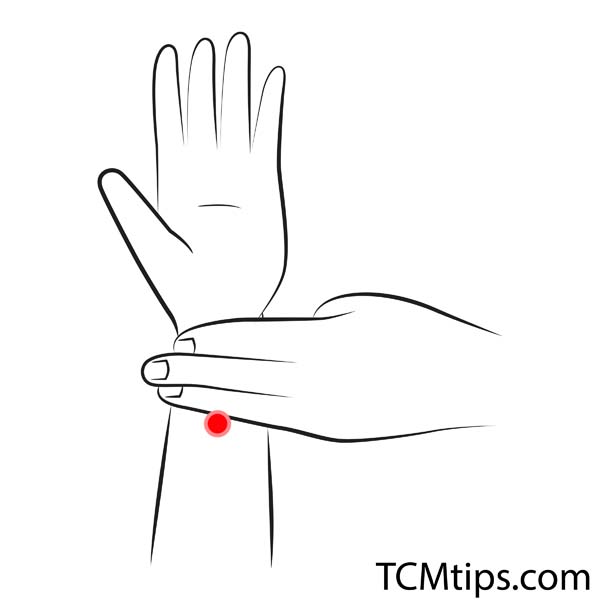
PC-6, also known as “neiguan” or “inner pass”, is located three finger widths below the inner wrist. According to a study conducted in 2019, PC-6, along with CV12 and ST36, significantly improved persistent hiccups in patients who underwent arthroplasty. This is also one of the acupressure points for gas and bloating as well as for carpal tunnel syndrome, headaches, and upset stomach.
Pressure Points For Hiccups In Babies

-
Acupoint: Bl-2 (Other Names: Urinary Bladder-2/Zan Zhu/Gathered Bamboo)
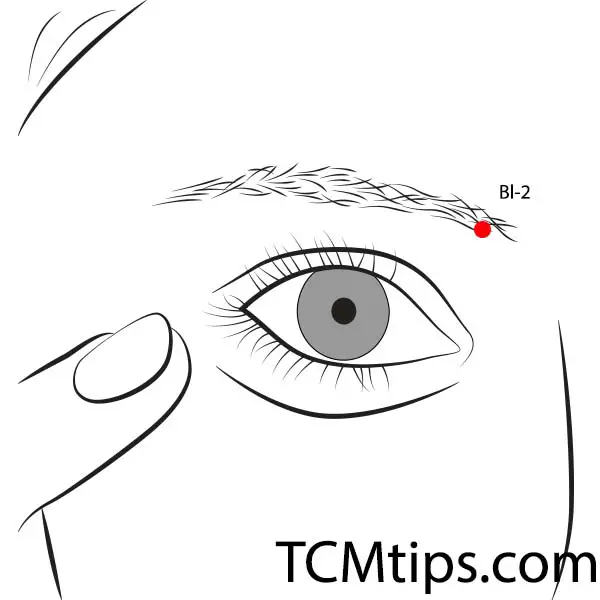
Bl-2, also known as “zanzhu” and “gathered bamboo”, is located at the medial end of the eyebrow. If your child is experiencing prolonged hiccups, then Bl-2 will help alleviate as well as open up their sinuses for easier breathing. Along with congestion, this acupoint is also known to help with allergy symptoms and is one of the acupressure points for dry eyes.
-
Acupoint: Ren-22 (Other Names: The Conception Vessel-22/Tian Tu/Heaven Projection)

Ren-22, also known as “tiantu” or “heaven projection”, is located in the middle of the suprasternal fossa between your collar bones. Professional acupuncturists target this acupoint to treat disorders that affect the throat, such as cough, hoarseness, and hiccups. It is also one of the acupressure points for asthma.

Try our Anti-Aging Gua Sha Tool designed to bring out your skin’s natural glow.
Best Gua Sha Product- Anti-Aging: The tool is designed to target 11 specific aging signs such as wrinkles and sagging skin. By following the 7-step routine, users can improve skin firmness and reduce fine lines naturally.
- Enhances Skincare Routine: It works effectively with serums and lotions, boosting absorption and efficacy of skincare products.
- Visible Skin Improvement: Users can expect a smoother complexion, reduced puffiness, and a more youthful appearance.
 P. Sze
P. Sze 




